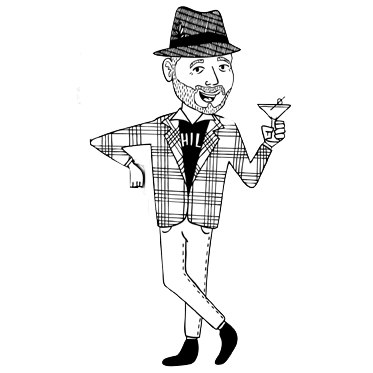“Dimmi, dimmi se mai fu fatta cosa alcuna.” (“Tell me, tell me if anything ever got done.”) -an anguished Leonardo da Vinci, on his deathbed, thinking that he was going to die having accomplished nothing.
Lately, I’ve started doing some reading on da Vinci. One surprising thing that came to my attention is that the smartest man to ever live and myself do have something in common (besides totally bitchin’ beards). If you wile away much of your life reading people’s facebook walls to avoid dealing with your cable bill and have a million unfinished projects, you probably have something in common with da Vinci too: he was a hopeless procrastinator whose scattered brain sent him off in a hundred different directions, resulting in a lot started but not a lot finished. This from neuronarrative:
Part of what made Leonardo such a “Renaissance Man” was that he was distractible as he was talented. Jacob Bronowski, the scientific historian, speaks about his procrastination. “His talents and energy were often wasted in doodles and unfinished projects. The Last Supper was only finished after his patron threatened to cut off all funds. Mona Lisa took twenty years to complete. The Adoration of the Magi, an early painting, was never finished and his equestrian projects were never built.”
I’d be lying if I said it didn’t make me feel better about the movie script I wrote 15 years ago and sent to a grand total of one movie agent. Or the 3 stage plays I have half finished. Or the dozens of notebooks in my house filled with half formed ideas. This from an excellent column in Psychology Evolution:
Leonardo rarely completed any of the great projects that he sketched in his notebooks. His groundbreaking research in human anatomy resulted in no publications – at least not in his lifetime. Not only did Leonardo fail to realize his potential as an engineer and a scientist, but he also spent his career hounded by creditors to whom he owed paintings and sculptures for which he had accepted payment but – for some reason – could not deliver, even when his deadline was extended by years. His surviving paintings amount to no more than 20, and five or six, including the “Mona Lisa,” were still in his possession when he died. Apparently, he was still tinkering with them.
I highly encourage the above article by the way, as it then deals with the history of procrastination, and why the fact that procrastination is seen as a terrible thing is a very flawed Western belief. And it makes sense. Had da Vinci taken his Ritalin and “focused” he might have been a very proficient anatomist, possibly even a doctor. He may have made a lot of money instead of being constantly on the run from creditors.
But that would have meant no Mona Lisa, no doodling of helicopters (I’m sure he beat himself up over “wasting his time” on that preposterous idea), no solar panels, no discoveries in geometry, no discovery of plate tectonics. And in fact his wandering mind helped him tremendously at times. Had he not wandered off into optics, he probably would have never created the spectacularly shaded smile on Mona Lisa, which would then be just another painting of a woman. Here’s some more insight from the above article.
If creative procrastination, selectively applied, prevented Leonardo from finishing a few commissions – of minor importance when one is struggling with the inner workings of the cosmos – then only someone who is a complete captive of the modern cult of productive mediocrity that pervades the workplace, particularly in academe, could fault him for it.
Productive mediocrity requires discipline of an ordinary kind. It is safe and threatens no one. Nothing will be changed by mediocrity; mediocrity is completely predictable…Mediocrity is the opposite of what we call “genius.” Mediocrity gets perfectly mundane things done on time. But genius is uncontrolled and uncontrollable. You cannot produce a work of genius according to a schedule or an outline. As Leonardo knew, it happens through random insights resulting from unforeseen combinations. Genius is inherently outside the realm of known disciplines and linear career paths.
For those of us with hopelessly scattered brains, who dream longingly of a day with “a place for everything, and everything in its place”, this is a refreshing realization in a world built on quick results and corporate-style organization. It doesn’t give us an excuse to further procrastinate (Don’t worry, we’ll find another excuse), but it reminds us that a scattered brain isn’t the worst thing in the world, or something that we should constantly beat ourselves up over (My scatterbrained brothers and sisters out there know what I am talking about. “How the hell did I write that check out to Comcast and then forget to mail it in! I’m a moron!”)
Needless to say, this doesn’t mean that we are anywhere near da Vinci’s ballpark in terms of intellect or creativity. We aren’t even tailgating outside that ballpark. But it does mean that the fact that our mind goes in a million directions at once is not necessarily a weakness, and is sometimes perhaps even a strength. It means that da Vinci probably put his keys down somewhere absurd while in the midst of some crazed daydream, and spent untold hours searching the house for them as he cursed himself. And it means that a man we all look up to as a superior being was as human as us and, like many of us, as frustrated with his flaws as he was proud of his accomplishments. For someone like myself who is constantly at odds with himself over his scattered brain, his ability to lose things, and his procrastination habits, that is no small consolation.



